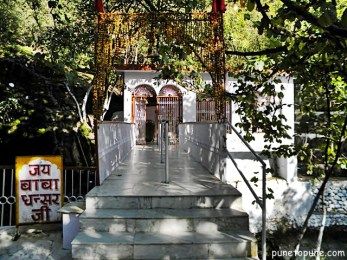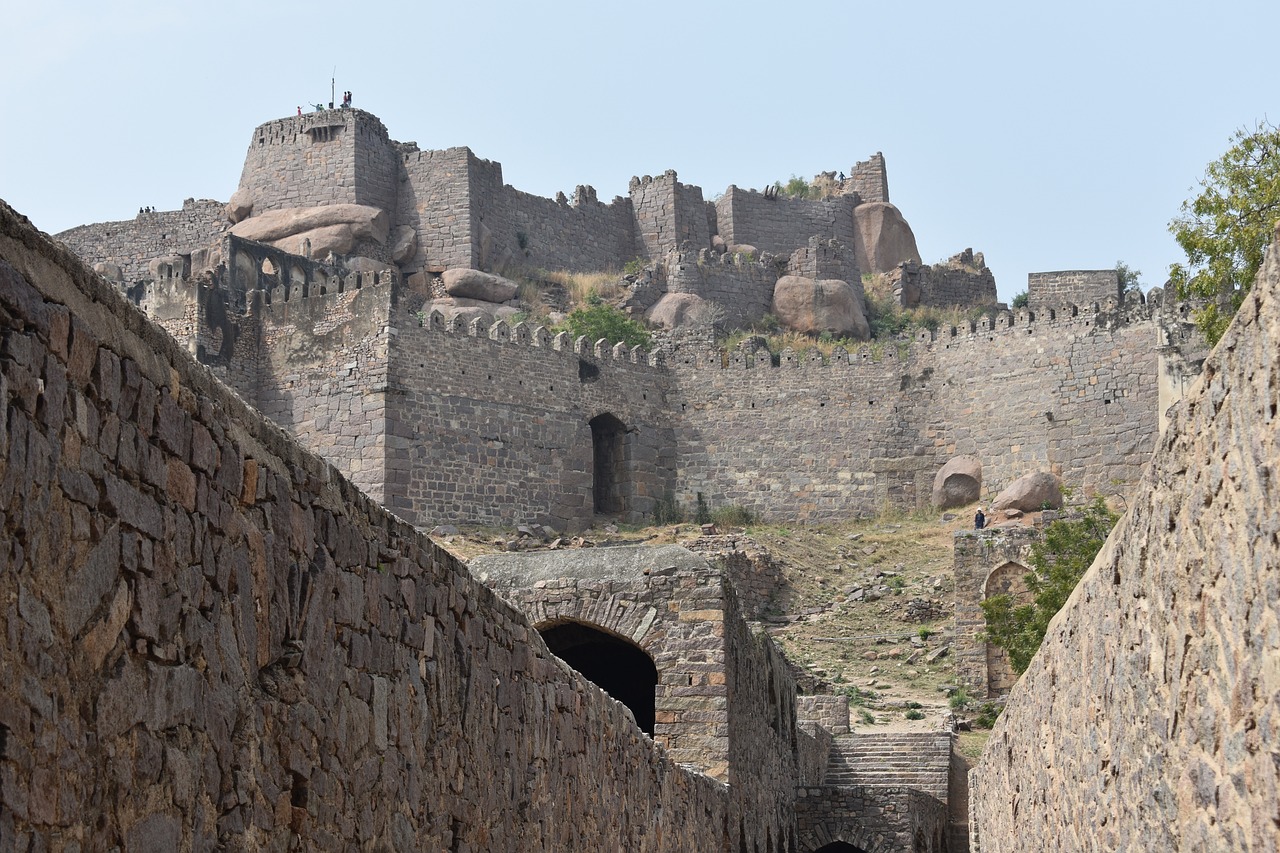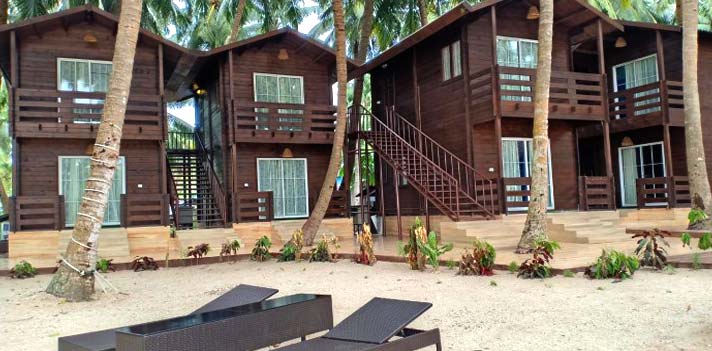Sited in the scenic Trikuta mountains of Jammu & Kashmir, Katra is located at an altitude of 762 meters (2500 feet) above the main sea level. The gates of the Holy shrine are open to the yatris throughout the year. However, the shrine sees a peak in the number of yatris in the summer months of May, June, July, and during the festivals of Chaitra (spring), Sharad-Ashwin (autumn), Navratras, and New year. At which time, the rush is such that a devotee may have to wait for 15-20 hours for a Darshan. Katra – The Holy City.
A remote, ancient shrine situated high up on the Trikuta hills, Vaishno Devi is revered by mythological heroes and modern Indians alike. Thousands of pilgrims brave the cold of the Himalayas and arduous trek from Katra to get a glimpse of the Mother Goddess, one who grants all wishes. One of the holiest pilgrimages in India, a visit to Vaishno Devi is memorable both for its sanctity and for the experience of being in the presence of the Divine Mother while surrounded by nature’s beauty.
Katra | Places to Visit
1. Vasihno Devi
Mata Vaishno Devi is known as the ‘the mother who fulfills all wishes. A pilgrimage to her remote temple at Katra is considered one of the holiest and hardest. The steep 12 kilometers (7.4 miles) trek from the base camp at Katra to the cave temple in the mountains is also one of the hardest tests of devotion. Yet, thousands of disciples – both young and old, undertake this trip every year braving the severe cold or even the persistent monsoon rains.
The temple of Mata Vaishno Devi itself enshrines the four pillars of Hindu belief: Dham, Arth, Kaam, and Moksha. The many points that mark the journey to the main temple – Katra, Bhanganga, and Trikoot Hill, mark the spots where the Mother Goddess herself stopped and prayed. Unlike other temples, Mata Vaishno Devi’s shrine does not contain any idols or pictures. It is a natural formation of rocks that are shaped like a base and has three heads at the top. These three heads are called ‘Holy Pindis’ and are worshipped as the revelation of Mata Vaishno Devi. This representation of the goddess is immersed in water.
2. Mantalai
Manatalai, a small historical town in Jammu, presents great importance to Hindu worshippers of Lord Shiva. The spiritual and religious importance of the place lies in the unification of Lord Shiva with his wife Goddess Parvati, which took place in the lush green areas of Mantalai.
Located at an altitude of 2000 meters and at a distance of 120 km from Jammu, Mantalai attracts a lot of Hindu devotees and tourists every year. This ancient place of worship is abode to a lot of temples, with the Sudh Mahadev temple lying closest to Mantalai. Devotees need to wade through River Devika to enter the premises of Sudh Mahadev, where prayers are offered to black marble Shivling.
3. Baba Dhansar Mandir
Located 11 kilometers (6.8 miles) from Katra, on the Katra-Resai road is the idyllic Baba Dhansar Mandir. A small temple, it is about a kilometer’s walk from the main highway, a trip that is well rewarded by the beautiful view of cool water gushing down from the mountains before it settles into a tranquil pond. The quaint temple and the scenic natural surroundings combine to offer spiritual peace and calm amidst idyllic hills.
4. Shiv Khori
Located 75 kilometers (46.6 miles) from Katra on a hillock in Ransoo village, Shiv Khori is a kilometer long cave, home to the 4-feet high Shiva Lingam. Worshipped as the center of Lord Shiva’s power, the naturally created lingam is set amidst a trickle of limewater that flows down from the ceiling of the cave and past the lingam. Shaped like the Lord’s own damaroo, the cave is wide at the ends and narrow in the center. Local legend says it actually connects to the larger Shivaling at Amarnath, but that cannot be confirmed as modern pilgrims are allowed no more than 135 meters (442.9 feet) inside the cave.
Similar Post – YAMUNOTRI – ORIGIN OF THE SACRED RIVER YAMUNA
Frequently Asked Questions About Places To Visit In Katra
Q – What is the best time to visit Katra?
A – Katra enjoys a sub-tropical climate. The summers are quite hot and winters are tolerable, even pleasant. The best time to visit Katra is from March to November.
Q – What are things to do in Katra?
A – Apart from darshan in holy shrines, there is plenty of sightseeing and adventurous activities to do in Katra. The place is a delight for a nature lover with its breath-taking view of hills, waterfalls, streams, greenery all around. Adventure junkies can indulge in paragliding, trekking, white water rafting, horse riding and more. There are also plenty of shopping centers for the shopaholic here.
Q – How many days are enough for Katra?
A – Since it’s a small town, with places of importance situated close to each other, a 2-3 day trip is enough to see all the important places in Katra. But if you wish to visit places around Katra, you may need to extend the trip to a day or two.
Q – How to reach Katra?
A – There are no direct flights to Katra since it doesn’t have an airport. You can take a flight or train till Jammu, the nearest place. From there, Katra is 49 km away. You can take a cab to reach Katra from Jammu.
Q – Is there a famous shopping center in Katra?
A – Katra Main Bazaar is a popular shopping area where you can pick everything locally. Shop for tasty dry fruits, shawls and other traditional clothes, artifacts and much more.
Q – At what altitude is Katra located?
A – Katra is located on the foot of Trikuta or 3 peaked mountains. It is located at an altitude of 2,871 ft. above sea level.
Q – What is there in Katra apart from Vaishno Devi?
A – Katra is home to many holy shrines apart from Vaishno Devi. It is also a beautiful place with breath-taking hills, dense forests, lovely streams, and waterfalls. It is a great place for not just devotees but also for nature lovers.
Q – Which are the best places to eat in Katra?
A – When you are in Katra, look out for these restaurants to enjoy delicious local cuisine- Prem Vaishno Dhaba, Saini Rajasthani Vaishno Dhaba, Punjabi Haveli, Gulshan Da Dhaba, and Madhuban.


















